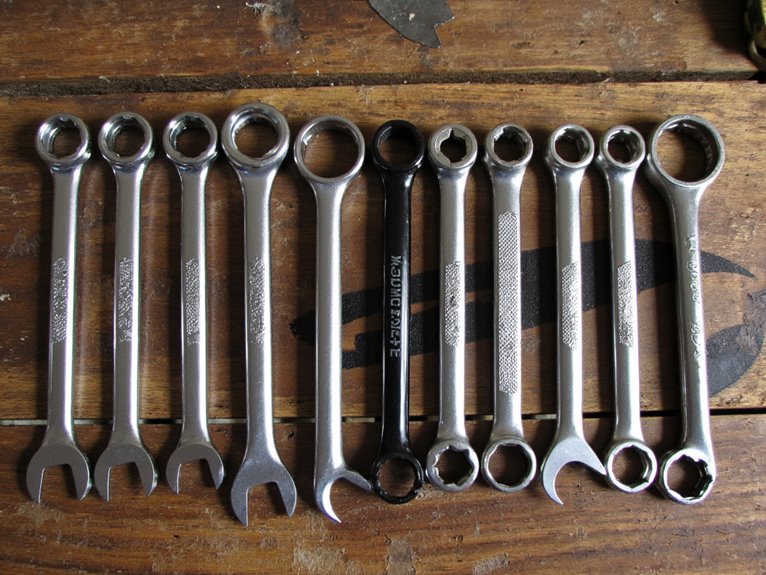Can You Wear Alice Pack Without a Frame?
While it is technically possible to wear an Alice pack without a frame, doing so can lead to discomfort, fatigue, and even injury due to the weight and bulk of the pack concentrating on the back and shoulders. Without a frame, the pack's weight and bulk can cause strain on the back and shoulders, leading to poor posture, muscle tension, and injury. To mitigate these issues, it's essential to understand the design and limitations of the Alice pack, as well as effective packing strategies to distribute weight evenly and reduce discomfort. Further insight into the benefits and challenges of frameless load carrying can provide a more thorough understanding of this critical issue.
We are supported by our audience. When you purchase through links on our site, we may earn an affiliate commission, at no extra cost for you. Learn more. Last update on 27th December 2025 / Images from Amazon Product Advertising API.
Understanding Alice Pack Design
The Alice pack's design is rooted in a modular approach, with interchangeable components and a focus on durability, comfort, and versatility.
This design philosophy enables users to customize their pack to suit specific needs and environments.
The pack's modular components, such as the shoulder straps, waist belt, and cargo compartments, can be easily swapped or replaced as needed.
This adaptability allows users to tailor their pack to specific tasks, climates, or terrain, ensuring ideal performance and comfort.
Frameless Load Carrying Challenges
One significant challenge of wearing an Alice pack without a frame is the increased risk of discomfort and fatigue, as the pack's weight and bulk can cause strain on the user's back and shoulders.
This can lead to poor posture, muscle tension, and even injury.
Without the structural support of a frame, the pack's load is borne directly by the user, which can be particularly problematic for those carrying heavy or bulky loads.
In addition, the lack of a frame can also make it more difficult to distribute the weight of the pack evenly, exacerbating the discomfort and fatigue.
Moreover, effective load management and proper packing techniques are essential to mitigate these challenges.
Benefits of Going Frameless
When worn without a frame, the Alice pack offers several advantages that improve the user experience.
By shedding the frame, the overall weight load is substantially reduced, allowing for increased agility and mobility.
Additionally, the frameless design provides a greater range of flexibility and comfort, making it an attractive option for those seeking a more streamlined and efficient load-carrying solution.
Reduced Weight Load
Carrying an Alice pack without a frame substantially reduces the weight load, resulting in a more comfortable and efficient hiking experience. The frame adds significant weight, which can be alleviated by going frameless.
This reduction in weight load has several benefits, including:
Less fatigue: With a lighter pack, hikers can cover more ground without feeling exhausted.
Improved mobility: A lighter pack allows for more agility and ease of movement.
Enhanced endurance: Hikers can sustain their pace for longer periods without feeling drained.
Increased Flexibility Range
By shedding the frame, hikers can experience a significant increase in flexibility, allowing for a wider range of motion and unhindered movement.
This increased flexibility range enables hikers to navigate challenging terrain with greater ease, making it an attractive benefit for those who venture into rugged landscapes.
Without the restrictive frame, the pack moves with the body, allowing for a more natural gait and reduced fatigue.
This improved agility also enables hikers to more easily scramble up steep inclines, traverse rocky terrain, and maneuver through dense vegetation.
Enhanced Comfort Level
Most notably, the frameless Alice Pack design eliminates the pressure points and hotspots commonly associated with framed backpacks, resulting in a substantially improved comfort level for hikers. This is because the pack conforms to the wearer's body, reducing the risk of discomfort and fatigue.
The improved comfort level is further augmented by the following benefits:
Reduced fatigue: Without the added weight and stiffness of a frame, hikers can cover more ground without feeling exhausted.
Improved mobility: The frameless design allows for a fuller range of motion, making it easier to navigate challenging terrain.
Heightened overall experience: By minimizing discomfort and fatigue, hikers can focus on enjoying the outdoors, leading to a more fulfilling and enjoyable experience.
Packing Strategies for Success
To facilitate a comfortable and efficient packing experience without a frame, it is vital to employ effective packing strategies.
This involves achieving a balanced load, organizing gear in a logical order, and distributing weight evenly throughout the pack.
Load Balance Essentials
Distributing weight evenly is essential when wearing an Alice pack without a frame, as it directly impacts the comfort and stability of the load. A well-balanced pack guarantees that the weight is distributed uniformly, reducing fatigue and discomfort.
To achieve perfect load balance, follow these essential guidelines:
- Center heavy items: Place heaviest items, such as tools or equipment, near the center of the pack to maintain stability.
- Balance left and right: Distribute weight evenly on both sides of the pack to prevent leaning or tilting.
- Keep dense items low: Position dense items, like batteries or canned goods, at the bottom of the pack to maintain a low center of gravity.
Packing Order Matters
Carefully planning the packing order of your Alice pack is essential, as it greatly affects the overall comfort and accessibility of your gear during transport.
A well-organized pack guarantees that frequently used items are easily accessible, reducing the need for unnecessary stops and adjustments.
Begin by packing essential items, such as first aid kits and navigation tools, in easily reachable compartments.
Next, add clothing and sleeping gear, followed by heavier items like food and cooking equipment.
Finally, secure fragile or sensitive items, like electronics and personal documents, in protected areas.
Weight Distribution Tips
A well-organized pack is only half the battle; effective weight distribution is just as vital to maintain comfort and prevent fatigue during extended periods of wear.
Proper weight distribution guarantees that the load is evenly spread across the pack, reducing strain on the shoulders and back.
These essential tips help achieve ideal weight distribution:
- Pack heavy items at the bottom: This keeps the center of gravity low and prevents the pack from shifting during movement.
- Balance weight on both sides: Distribute weight evenly on both sides of the pack to maintain balance and prevent leaning.
- Keep fragile items close to the back: This protects them from damage and confirms they don't shift during wear.
Comfort and Ergonomics Considerations
When worn without a frame, the Alice pack's comfort and ergonomics are substantially impacted, particularly in terms of weight distribution and load stability.
The pack's weight is concentrated on the shoulders and hips, causing discomfort and fatigue. Additionally, the lack of structural support can lead to uneven weight distribution, resulting in an unstable load.
This can cause the pack to shift during movement, exacerbating discomfort and affecting overall mobility. Moreover, the absence of a frame can lead to a higher risk of strain and injury to the back and joints.
In deciding whether to wear an Alice pack without a frame, one must take into account these comfort and ergonomic factors.
Load Weight and Balance Impact
The weight and balance of the load carried in an Alice pack without a frame can substantially affect the wearer's comfort, mobility, and overall performance, making it imperative to carefully consider load distribution and balance.
To ensure optimal load management, consider the following:
Weight distribution: Ensure the heaviest items are placed closest to the wearer's back, maintaining a low center of gravity to prevent shifting and discomfort.
Balance: Distribute the load evenly, avoiding uneven weight distribution that can cause strain and fatigue.
Load securing: Secure loose items to prevent shifting and noise, ensuring a comfortable and quiet hiking experience.
Proper load management is crucial when wearing an Alice pack without a frame, as it directly impacts the wearer's overall comfort and performance.


